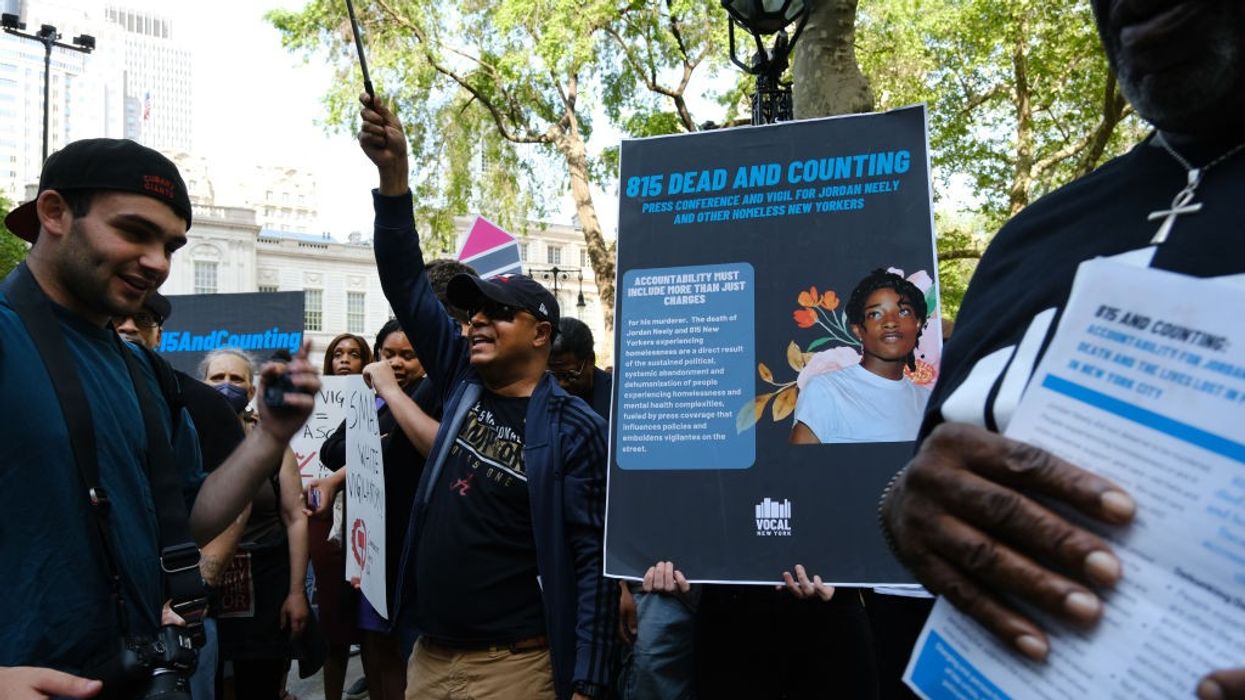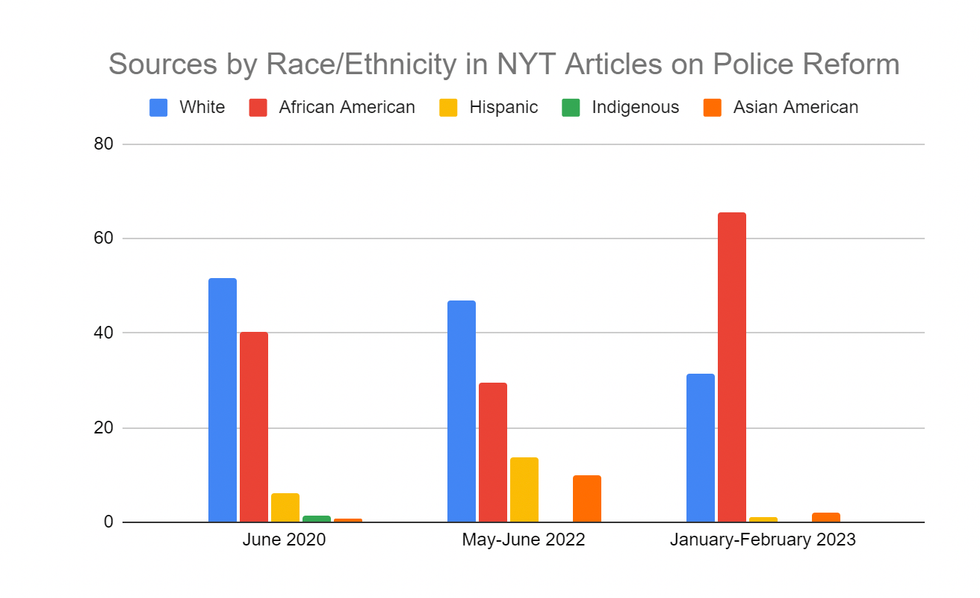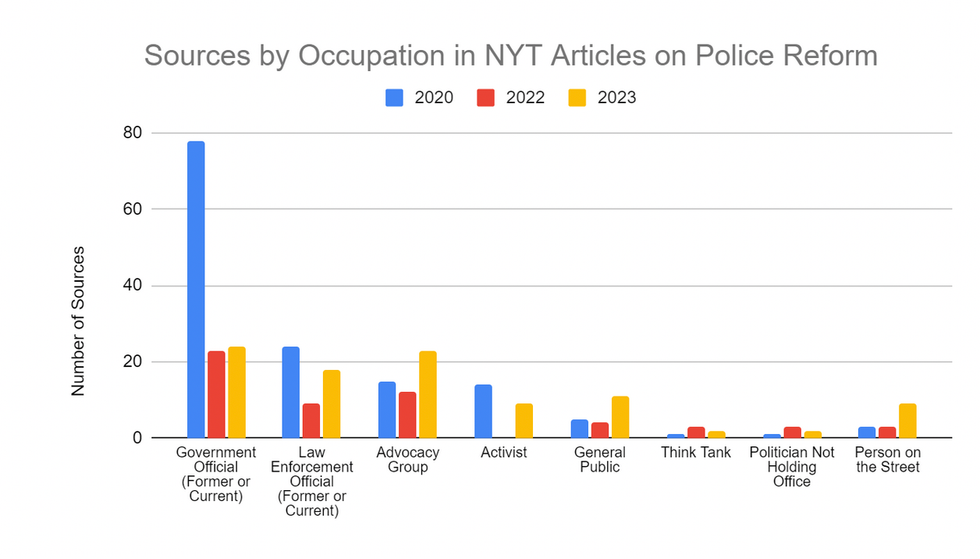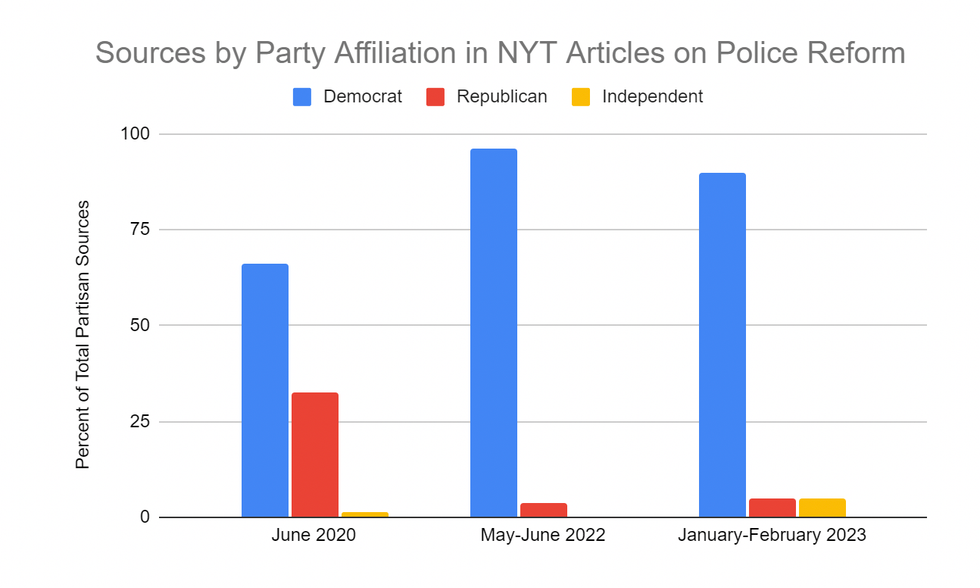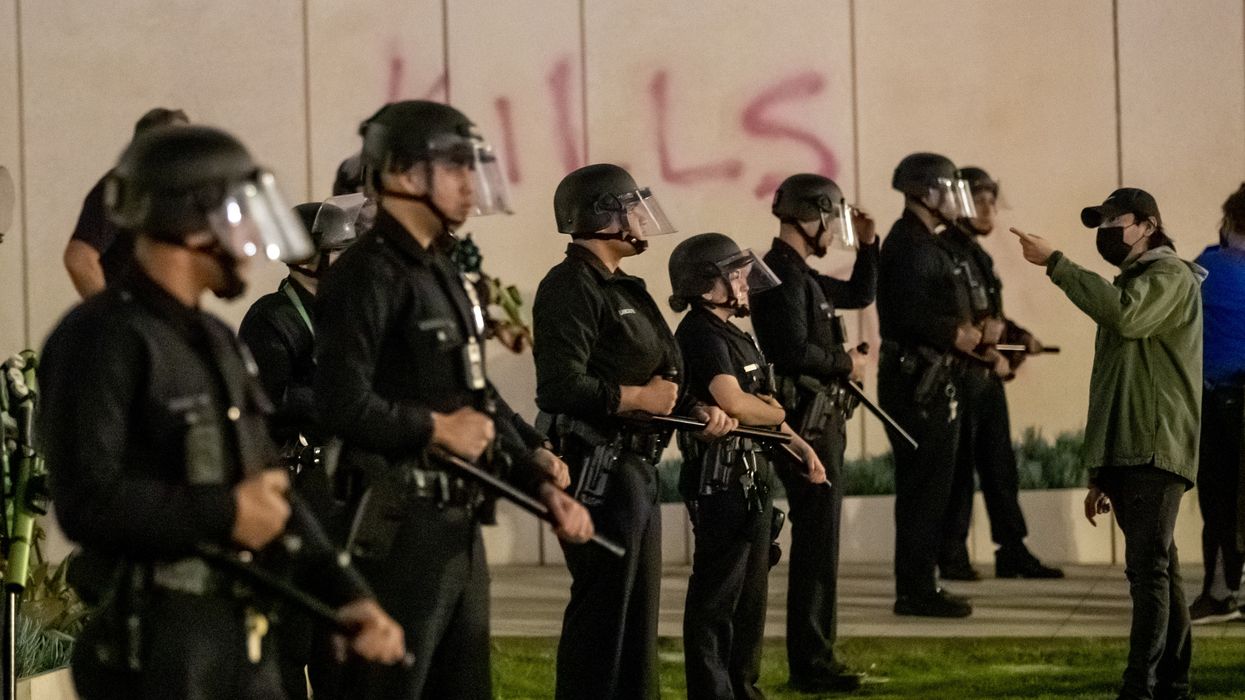The 29-year-old photographer died three days later. Cause of death? “Excessive bleeding due to severe beating.” A body-cam snuff film of sorts was later released, showing some of Nichols’s last moments. The video transcripts speak for themselves.
Officer to Tyre:
“You’re gonna get your ass blown the fuck up. Oh, I’m gonna knock your ass the fuck out!”
Tyre to officers:
“OK. You guys are really doing a lot right now…”
— “Lay down!”
— “Stop! I’m just trying to go home.”
— “Spray him! Spray him!”
— “Stop! I’m not doing anything.”
— “Tase him! Tase him!”
Tyre cries out:
“Mom! Mom!”
Officer to Tyre:
“Watch out! I’m gonna baton the fuck out of you!”
— “Dude, hit him!”
— “Hit him!”
— “Hit him!”
— “Mom…”
Plainclothes Paramilitaries
Welcome to America’s emerging predator state.
Memphis is anything but an outlier. There are thousands of “elite” teams like that city’s Scorpion unit and they come in all calibers, shapes, and sizes. They range from specially trained teams in small-town police departments to sprawling “anti-crime” squads in big cities like Atlanta and New York, not to mention federal tactical units like the Border Patrol’s BORTAC and counter-terrorism task forces like the one that killed Manuel Terán in Georgia last month.
Beyond the scary names, such specialized units tend to share some other characteristics. In their warlike tactics, their strategic outlook, and their often-violent subculture — if not always in their uniforms — they are virtually indistinguishable from their counterparts in the military. In their “wars” on crime, drugs, and terror, they work with a similar playbook imported from U.S. combat missions overseas but seemingly stripped of any reference to the rules of war.
They conduct themselves, in other words, as plainclothes paramilitaries in America’s urban war zones (or what they like to call “hot spots”). Like Army Special Operations forces, they are regularly charged with the execution of “time-sensitive,” “clandestine,” and often “unilateral” missions — with or without the support of the local population — using “assurance, deterrence, and coercion” to fight the enemies of the state and exert control over “hostile, denied, or politically sensitive environments.”
What’s more, these units operate with a legal guarantee of “qualified immunity” for violence against civilians. In other words, despite the recent Memphis exception, they normally have near-total impunity when it comes to violent offenses which, had they been committed in another country, might be classified as war crimes, crimes of aggression, or even crimes against humanity.
For offenses of this nature, the United States is itself an international hot spot. In the course of a given year, according to one recent study, our law enforcement agencies were responsible for 13% of all fatalities caused by the police globally, even though Americans make up just 4% of the world’s population. And as investigative journalism has revealed, specialized units like the Scorpions are responsible for a wildly disproportionate share of those deaths.
Take the New York City Police Department. Since 2000, its own use-of-force reports show that nearly one in three police killings have been by non-uniformed officers, especially “anti-crime” plainclothes units with paramilitary training and a long-standing reputation for terrorizing communities of color.
Nearly a decade before the slaying of Tyre Nichols, there was, for instance, the murder of Eric Garner, a 43-year-old street vendor, “neighborhood peacekeeper,” and father of six. His life was snuffed out thanks to a police chokehold after he was stopped for selling “loosies,” unlicensed cigarettes, on a Staten Island street corner in the summer of 2014. (In the end, the only person to serve jail time in Garner’s death was the young filmmaker of color who had the courage to record the encounter.)
Like the officers in the South Bronx who gunned down Amadou Diallo outside his home as he reached for his wallet, the ones in Queens who sprayed Sean Bell with 50 bullets on his wedding day, and the ones in Brooklyn who opened fire on a mentally ill man named Saheed Vassell in 2018, those responsible for Garner’s murder were members of the infamous “anti-crime” units whose work would become a blueprint for Scorpion-style policing.
The force’s predatory philosophy is often summed up in a single sentence lifted from Ernest Hemingway’s 1936 (satirical) short story, “On the Blue Water.” Officers of the peace have been known to quote it, to wear it to work, and to plaster it on the walls of their precincts: “There is no hunting like the hunting of man, and those who have hunted armed men long enough and liked it, never care for anything else thereafter.”
In the words of one New Yorker, a nurse from Crown Heights who witnessed the killing of Vassell, “The undercovers think they have the authority to do anything they want. They hunt [people] — like us black people — down… They act tough… like they’re from a gang. But they’re only like that because they have a badge.”
A History of Violence Against Women
In December 2019, the city of Louisville, Kentucky, rolled out its version of the Scorpion unit. It was labeled the Place-Based Investigations Squad (PBI) and put under the aegis of its police department’s Criminal Interdiction Division.
Following paid consultations with “problem-oriented” academics and police executives from other cities, the Louisville Metropolitan department implemented a then-little-known practice called “Place-Based Investigations of Violent Offender Territories,” or PIVOT. In the end, this would prove but a variation on an already all-too-familiar theme of hot-spot policing first pioneered by “police scientists” in Minneapolis some 30 years before George Floyd’s murder. (In fact, the use of the term “hot spots” can be traced back to the early years of World War II.)
Under this model, police assets were to be specially directed toward a handful of hot spots or “chronically violent urban locations.” That such places were home to populations of disproportionately Black, Indigenous, and immigrant Americans will no longer shock anyone; nor that they overlapped strikingly with areas of concentrated impoverishment and “planned abandonment”; nor that an influx of heavily armed strangers was undoubtedly the last thing such communities needed from the government. All of this was beside the point. The “marginal deterrent effect” — the minimal difference such hot-spot policing purportedly made in the calculations of would-be criminals — was enough to keep most critics quiet.
Three months after the rollout, the Place-Based Investigations Squad would play an integral part in the police raid that took the life of Breonna Taylor, a 26-year-old Black woman and emergency-room technician at the University of Louisville, accused of no crime, but executed anyway by three Louisville police officers standing in the hallway of her own home. Officers from the PBI Squad had requested and obtained five search warrants with “no-knock” clauses, including one for Ms. Taylor, acting on what one would later call a “gut feeling.”
Within moments of the officers’ arrival at her apartment on the night of March 13, 2020, Breonna Taylor lay dying, felled by six of 32 shots fired into her home. It would be 20 minutes before she even received medical attention — 15 minutes too late to save her life. Although four officers have now been federally charged for civil rights violations, and three stand accused of lying on the affidavit they used to secure the warrants, a grand jury ultimately failed to return a single indictment for the officers who opened fire.
That night in 2020, Ms. Taylor joined a long litany of Black women, robbed of their lives while simply trying to live them by those supposedly tasked with their protection. According to the latest count, some 280 women have been slain in encounters with law enforcement over just the past five years. Researchers have found that women made up nearly half of all police-initiated contacts and Black women were three times more likely than white ones to experience the use of force during a police-initiated stop.
“Elite” police units have played an outsized role in such state-sanctioned femicides.
Take the case of India Kager, 27, a Navy vet killed by a tactical team in Virginia Beach in 2015, as she sat in her car with her four-month-old baby in the back. Or consider Atlanta’s RED DOG (short for “Run Every Drug Dealer Out of Georgia”) Unit. On November 21, 2006, plainclothes officers from that narcotics squad — having lied under oath to obtain a no-knock warrant — barged into the home of Kathryn Johnston, a 92-year-old grandmother, and promptly gunned her down. Drugs were then planted near her body in a sorry attempt at a cover-up.
Disbanded or Rebranded?
We’ve been here before: Officers are charged with second-degree murder. Sweeping reforms are promised. Controversial units are “deactivated,” their officers reassigned to other bureaus.
We saw this with the Amadou Diallo protests and the New York Police Department’s Street Crimes Unit in the early 2000s. We saw it with Atlanta’s RED DOGs after the killing of Kathryn Johnston. We saw it with Louisville’s PBI Squad in the months following the murder of Breonna Taylor — and we’re seeing it now in the aftermath of the assault on Tyre Nichols.
Count on this, however: as time passes and attention subsides, reforms are abandoned, charges are dropped, or the defendants found not guilty by juries of their peers. And special ops teams are rebranded and brought back to life under different names.
Today, Atlanta’s “Titans” have replaced the “RED DOGs” of old, while the very police executive who ran the old unit, Cerelyn “CJ” Davis, was made commissioner of the Memphis police department. The city of Memphis has also sought guidance from Ray Kelly, who was New York police commissioner during a particularly trigger-happy period in that department’s history (including the deaths of Sean Bell, Ousmane Zongo, Timothy Stansbury, Ramarley Graham, and Kimani Gray).
Meanwhile, New York City Mayor Eric Adams, himself a veteran of a plainclothes police unit, is touting his “Neighborhood Safety Teams” (along with another elite strike force inherited from his predecessors, the “Strategic Response Group”) as the basis for a whole new approach to policing. In truth, they are simply picking up where the Street Crimes Unit left off. The only real differences: longer guns, modified uniforms, and body cameras that can be turned on or off at will.
The names change, but the strategy (such as it is) remains the same and the body counts only climb higher.
“Collateral Damage” and the War at Home
Yet such police killings are not truly local matters. The final piece of the puzzle is the national security state, itself a predatory entity and the source of much of the surplus that supplies the police with significant military-grade weaponry and the bipartisan consensus that keeps the dollars flowing.
Local police agencies would not have anything like the arsenals they have today — ones that would be the envy of many of the world’s militaries — without the largesse of the Pentagon’s popular 1033 program. For years, it has been arming police departments around the country in a distinctly military fashion, sometimes even with weapons directly off the battlefields of this country’s distant wars. Thanks to that program, the Memphis police department has managed to obtain a significant stockpile of high-powered rifles and multiple armored personnel carriers, while the State of Tennessee alone has received $131 million worth of weaponry from the Department of Defense.
Meanwhile, paving new ground, the Special Operations Bureau of the San Francisco Police Department has procured unmanned, remotely piloted killer robots with names like TALON and DRAGON RUNNER. It is now advertising its intent to use them as a “deadly force option” in criminal apprehensions and other incidents like “riots, insurrection, or potentially violent demonstrations.”
None of this would be possible without the support of politicians from both parties. The 2023 budget agreed upon by both parties, for instance, promises $37 billion in new spending on law enforcement — with double-digit percentage increases in discretionary funding for local police departments, above and beyond the nearly $1 trillion for the Departments of Defense and Homeland Security. As a “moral statement,” that document bears a striking resemblance to its predecessors, backing the blue with billions of public tax dollars, while bearing witness to the priorities of a government on the warpath against enemies domestic and foreign.
Zooming out, we can see this kind of predatory policing for the national crisis it really is.
In recent decades, according to a definitive study published in the British medical journal The Lancet, more than 30,000 American civilians have lost their lives in encounters with law enforcement, a figure perhaps best compared to the rates of “collateral damage” in war-torn places like Ukraine, Gaza, Yemen, or the Sahel. And whatever we call them, “elite” units like the Scorpions have played a leading role in that carnage. From their basic training to their advanced technology and heavy weaponry, they are increasingly cast as the protagonists in what has become America’s homeland theater of war, producing content of spectacular violence as this country’s war machine turns inward.
At a time when significant crossover can be seen between law enforcement and the white nationalist militia movement, it should be obvious that police departments are, among other things, playing a dangerous game with democracy. With Donald Trump and his crew still going full Blue Lives Matter and the Biden administration failing to pass meaningful police reform, count on another bloody harvest of police violence in 2023 and 2024. In the event of sustained civil conflict, there is little mystery about which side some elite police units would choose to fight on or who would find themselves in the scopes of their semi-automatic rifles.
Still, the predator state is not invincible, nor is its ascendancy inevitable. After all, the claims of police departments to legitimacy rest upon the support of elected officials who remain vulnerable to popular pressure, while the very existence of such paramilitary units depends on their access to the public purse. In a very real sense, then, they can still be fired, or at least defunded.
For now, in the absence of consequences, the hunt for humans goes on uninterrupted and that’s likely to continue as long as so many Americans remain willing to put up with it.
